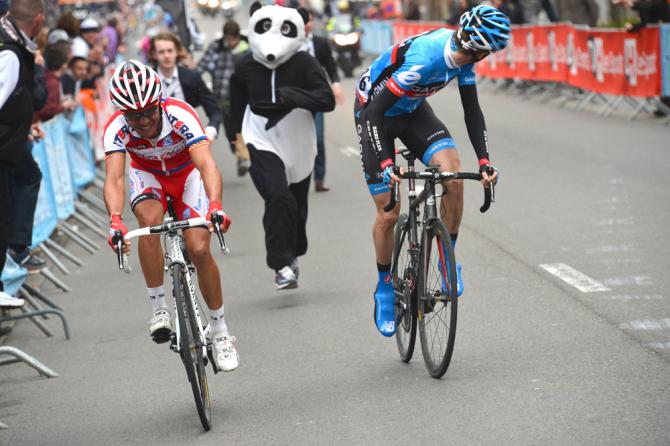Dan Martin: Liege-Bastogne-Liege is a long game of poker
Irishman takes aim at second Doyenne win






Dan Martin knows how to win Liège-Bastogne-Liège and he knows how to lose it. The Irishman could only smile when that formula was put to him by a reporter at Etixx-QuickStep’s hotel in Maasmechelen on Friday afternoon, and he also knows that a man should never face into La Doyenne with too many fixed ideas about how the race might unfold.
Dan Martin Q&A: 'I feel reinvented'
Dan Martin gains confidence with early season victory
Dan Martin: I went into the Mur de Huy believing I could win
Dan Martin's 'Emerald Panda' Specialized Tarmac
Liege-Bastogne-Liege: Kreuziger leads Tinkoff into battle
Dan Martin: I just didn’t have the legs in the finish of Liege-Bastogne-Liege
At Flèche Wallonne on Wednesday, Martin and his stable-mate Julian Alaphilippe set out with a precise plan of attack for trying to outmanoeuvre Alejandro Valverde (Movistar) on the Mur de Huy, but found the Spaniard was simply too strong in the final reckoning. They will set on Sunday with a playbook that leaves more scope for improvisation.
“At Liège-Bastogne-Liège, there are so many things that can happen during the day, so you need to be flexible,” Martin said. “You could maybe miss opportunities. You might say you’re going to wait until a specific moment to attack but maybe the perfect moment comes a kilometre before and you miss it because you’re thinking too much of what you’d planned before the race.”
Both in 2013, when he won, and in 2014, when a late crash denied him a repeat victory, Martin waited until the final haul up the Côte de Ans before playing his hand at Liège-Bastogne-Liège, and he seems likely to follow a similar template this time around. The addition of the new cobbled climb of the Côte de la Rue Naniot after the Côte de Saint-Nicolas alters the finale, but the overarching tenet of recent editions of the race ought to remain unchanged.
“It’s a waiting game. It’s such a long, hard race, and you pay for any mistakes all the bits of energy you can save in the day it helps for the finish, for the explosiveness in the finish, it helps,” Martin said.
“And it also helps to be strong in your head because even now with the new climb they added and the Côte de Ans, if you look up too far, you don’t even see the top. Or you see the top and it seems so far away. After 250 kilometres, it’s easy to think you’ll never get to the top, your legs are finished. It’s a long game of poker.”
Get The Leadout Newsletter
The latest race content, interviews, features, reviews and expert buying guides, direct to your inbox!

Barry Ryan was Head of Features at Cyclingnews. He has covered professional cycling since 2010, reporting from the Tour de France, Giro d’Italia and events from Argentina to Japan. His writing has appeared in The Independent, Procycling and Cycling Plus. He is the author of The Ascent: Sean Kelly, Stephen Roche and the Rise of Irish Cycling’s Golden Generation, published by Gill Books.